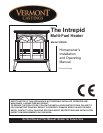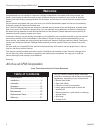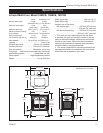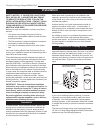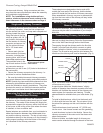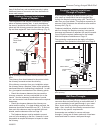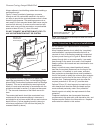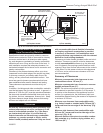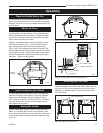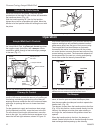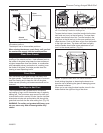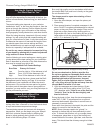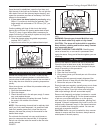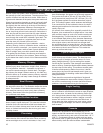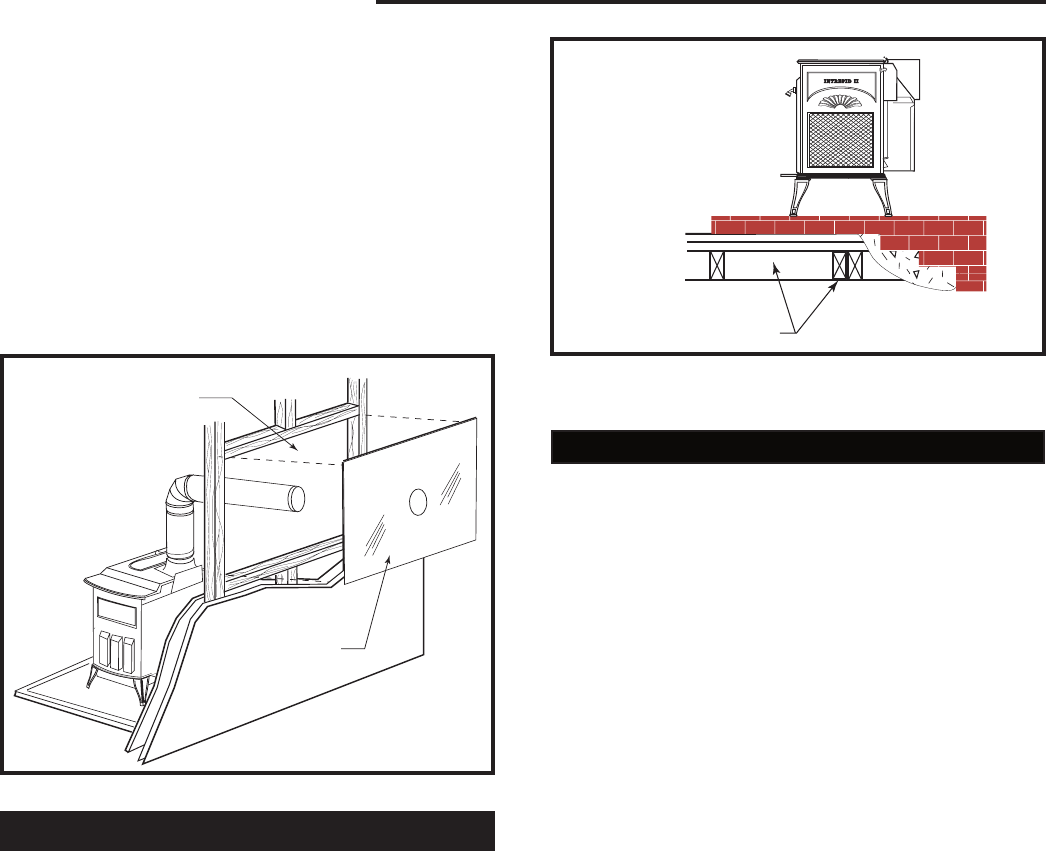
8
Vermont Castings Intrepid Multi-Fuel
2000970
Hearths
This appliance must be installed on to hearth that
meets the requirements of Part J of the Building Regu-
lations 2000 (Combustion Appliances and Fuel Storage
Systems). This can be achieved by ensuring that the
hearth is constructed and sized in accordance with the
guidelines included in section 2 of approved document
‘J’. The size and clearances of the hearth are as fol-
lows:
The constructed hearth should be constructed in ac-
cordance with the recommendations in document J,
and should be of minimum width 840 mm and minimum
depth 840 mm (if a free standing hearth b) above) or
a minimum projection of 150 mm from the jamb (if a
recessed hearth a) above).
Always adhere to local building codes when installing a
wall pass-through.
Figure 7 shows a method of passing a connector
through a wall. All combustible material in the wall is
cut away to provide the required clearance that is three
times the pipe diameter. The resulting space must re-
main empty. A flush-mounted sheet metal cover may be
used on one side only. If
covers must be used on both
sides, each cover must be mounted on noncombustible
spacers at least 25 mm (1”) clear of the wall.
DO NOT CONNECT AN INTREPID MULTI-FUEL TO
ANY AIR DISTRIBUTION DUCT OR SYSTEM.
ST247
Rear exit floor dgrm
12/14/99 djt
Wood framing requires pro-
tection form radiant heat
ST247a
Fig. 8 Supporting timbers under fireplace hearth are consid-
ered to be combustible.
ST494
steel
wall pass thru
11/00
460 mm (18”)
clearance all
around the pipe
Flush Mounted
Sheet Metal
Cover
ST494a
Fig. 7 An approved wall pass-through for Canada.
Floor Protection for Fireplace Installations
Do not assume your fireplace hearth is completely
noncombustible.
Many fireplace hearths do not satisfy the “completely
noncombustible” requirement because the brick or
concrete in front of the fireplace opening is supported
by heavy wood framing as in Figure 8. Because heat
passes through brick or concrete readily, it can easily
pass through to the wood. As a result, such fireplace
hearths can be a fire hazard and are considered a com-
bustible floor.
Keep in mind that many raised hearths will extend
less than the required clearance from the front of the
heater when it is installed. In such cases, sufficient
floor protection as described above must be added in
front of the hearth to satisfy the minimum floor protector
requirement from the front of the stove: 406 mm (16”)
from the front. Fireplace hearths must also offer the
required protection of 152 mm (6”) on either side.
Optional 76 mm (3”) short legs may be used only on
such hearths that meet the width and depth require-
ments outlined previously under “floor protection.”
Hearth rugs do not satisfy the requirements for floor
protection.
Fireplace installations also have special clearance
requirements to the side walls, side decorative trim, and
fireplace mantle. Refer to the information on fireplace
and mantel trim shields in this section.



